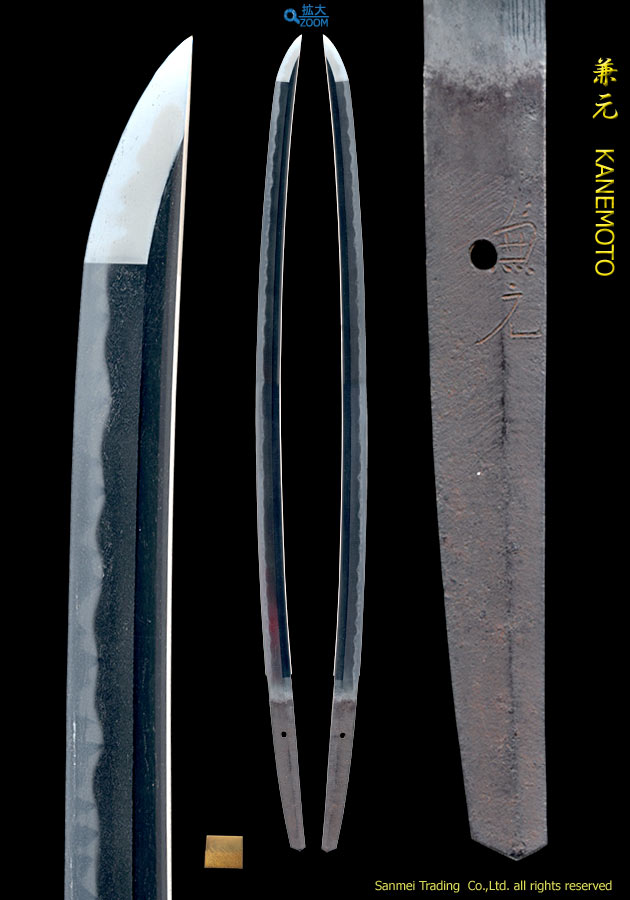Length of cutting edge72.4cm Curvature1.5cm Width of base29.4mm Width of Yokote23.5mm Thickness of base6.0mm
Forging pattern (kitae hada) : Kitae hada is fine Itame-hada mixing in with flowing Itame marks, Masame straight indication. There reflects with speckled whitish Utsuri reflection that comes from hard metal granules over the hiraji-surface.
Tempering pattern (hamon) : Hamon is fine ko-nie base, three sharp head pointed gunomes repeated regularly, so called Sanbonsugi and each head of tall gunome radiates Yubashiri sparkling giltter into the surface. The interior of temper is filled in rich works with whitish NIOI and with Sunagashi blushing activity. The entire Ji-Ha is filled in with rich, clear and vivid scene that comes from skilled technique for the best cutting performance.
Temper of tip (boshi) : Temper of tip is Gunome irregular pattern with medium circle turn back.
Tang (Nakago) : Nakago is an original UBU, V-shape (Iriyama-shape) heel. One Mekugi-ana peg hole. Takanoha V-shaped file marks. Two large signature in hakiomote is located on the shinogi-ji side [KANEMOTO].
The subject heroically brave katana was made during during battle period in the middle of 16 th century. KANEMOTO was a representative sword maker equaled to KANESADA in Mino province. Second generation KANEMOTO had an additional famed name MAGOROKU, as one of the most skilled sword makers among all generations of KANEMOTO lineage. Major feudal lords, Toyotomi Hideyoshi, Fukushima Masanori and Yamanouchi Kazutoyo gladly used KANEMOTO katanas, proud of the best cutting performance among the other blades.
The mature forging and unique temper pattern generated masterly best cutting performance raised in fame among commanders. The signature of MAGOROKU KANEMOTO (2nd generation) is understood that it was large and square chiselled, broad-minded, full of dignity. The signature of this Katana shows some feature of signature by the 3rd generation KANEMOTO.
Gold plated habaki collar, preserved in a Shira-Saya plain wood mounting.
In Haiomote front, there is some rusted decayed flowing Masame marks in the interior of temper.

